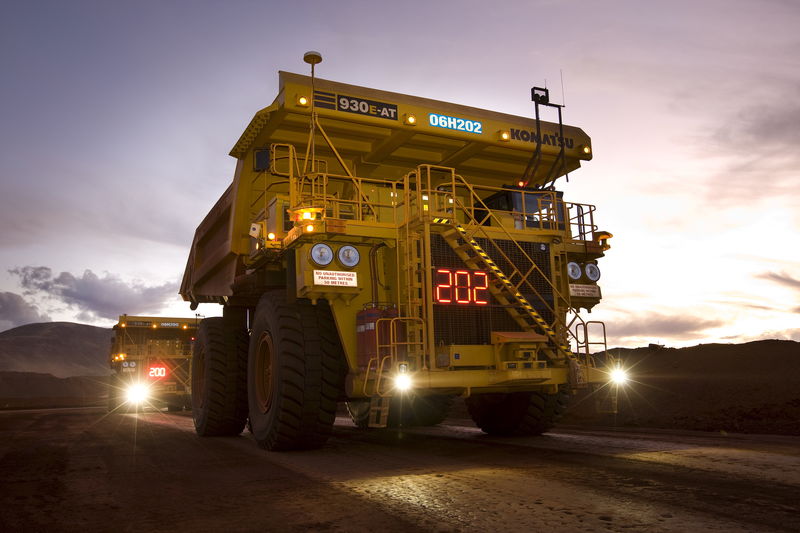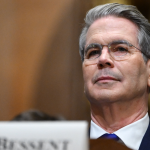
Investing.com — As the U.S. presidential race unfolds, with former President Trump on track to return to the White House, major policy shifts appear likely, impacting sectors like machinery and construction.
Analysts at Barclays (LON:BARC) have identified core areas where changes in trade, immigration, and regulatory policies under a Trump administration could reshape these industries, from tariff impacts to funding challenges.
Tariffs, a key issue in Trump’s first term, could again become a central policy tool, posing potential headwinds for the machinery sector.
Companies in this field typically operate with global supply chains and substantial international sales exposure, including agricultural equipment firms that depend on global sales markets.
Tariffs on imports, particularly from major trade partners, could strain the machinery sector, though industry players are better equipped now to pass on costs compared to 2018.
During the last tariff hike, machinery stocks saw declines due to investor concerns over rising operational costs, but Barclays notes that companies today have refined pricing strategies to manage cost increases.
Firms have learned from COVID-related supply chain disruptions and developed mechanisms like tariff surcharges to offset cost pressures, which may help them adapt more effectively if tariffs return.
The potential for restrictive immigration policies under a Trump presidency could pose challenges for construction and manufacturing industries, where foreign-born workers are critical to the labor force.
As per Barclays, these sectors employ about six million immigrant workers, many of whom fill roles that are currently difficult to staff with domestic labor alone.
Given that roughly 30% of U.S. construction workers are immigrants, stricter immigration policies could lead to increased labor shortages, driving up project costs and wage inflation. Southern states, which house a larger portion of these workers, are especially vulnerable.
If immigration constraints escalate, it could affect the availability of labor for projects in these high-growth regions, potentially reducing project feasibility or inflating costs.
Regulatory policy shifts are also expected to have mixed impacts. Trump’s past approach to environmental regulation included substantial rollbacks, and a second term could see a continuation, particularly in clean energy areas.
Trump has been vocal about reducing support for electric vehicles, which could dampen federal backing for EV-related projects, a notable area of focus under the Biden administration.
Companies involved in renewable energy projects, such as wind or solar infrastructure, may face a cooling of support, while fossil fuel-based initiatives could see fewer regulatory obstacles.
On a positive note, Trump’s focus on permitting reform may help machinery companies involved in infrastructure projects.
During his first term, Trump sought to ease permitting processes, and a second administration could further reduce bureaucratic hurdles, especially around large construction and infrastructure projects.
For companies reliant on heavy materials and equipment rentals, streamlined permitting could open up more opportunities for new projects and facilitate growth through mergers and acquisitions.
With Republicans poised to control both chambers of Congress, key Biden spending initiatives could face scrutiny. Initiatives such as the Inflation Reduction Act and the CHIPS Act may see slower approval rates, and increased oversight could impact how future stimulus dollars are distributed.
Barclays analysts flag the GOP’s interest in curtailing spending, particularly around discretionary projects tied to clean energy and technology.
While spending on these initiatives cannot be eliminated without congressional action, project approvals and budget allocations may be subject to delays and stricter oversight.
This potential shift is likely to impact sectors reliant on public funding for projects, including certain machinery and construction firms that had factored in stimulus-related revenues.
Investors had anticipated a Trump victory but seem less prepared for a “red wave” scenario.
The immediate impact on machinery stocks is nuanced: while companies are expected to handle trade-related cost pressures better this cycle, a GOP-led Congress could heighten uncertainties around stimulus-backed megaprojects in areas like electric vehicle infrastructure and battery manufacturing.
Equipment rental companies, often viewed as indicators of large project growth, may see slower momentum if these projects stall.
Certain construction firms may face direct risks from tightening immigration policies that impact labor availability and project timelines, while engineering firms that rely on global workforces may face fewer constraints.
The surface transportation funding within the Infrastructure Investment and Jobs Act, however, is largely secure until fiscal year 2026, providing a buffer for companies heavily tied to this sector.
Companies like MasTec (NYSE:MTZ), which have a diversified portfolio across traditional energy, communications, and power transmission, may be better positioned to navigate these shifts. Similarly, material firms with less exposure to clean energy are expected to remain more neutral to any changes resulting from a Trump administration.
Barclays analysts also point to local transportation investments approved by voters in states like Arizona, Washington, and South Carolina, which could bolster regional construction and machinery demands.
Local initiatives to renew transportation taxes and maintain carbon credit markets were largely supported, and companies with strong regional ties, such as Vulcan Materials (NYSE:VMC), Martin Marietta, and Arcosa (NYSE:ACA), stand to benefit.
Though federal clean energy funding might face obstacles, these state-level decisions signal a steady demand for construction materials and equipment in specific markets, especially in the western and southern U.S.






